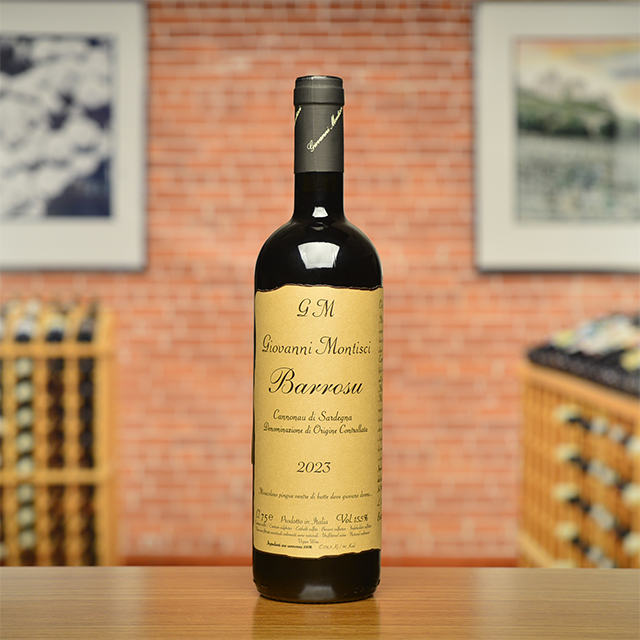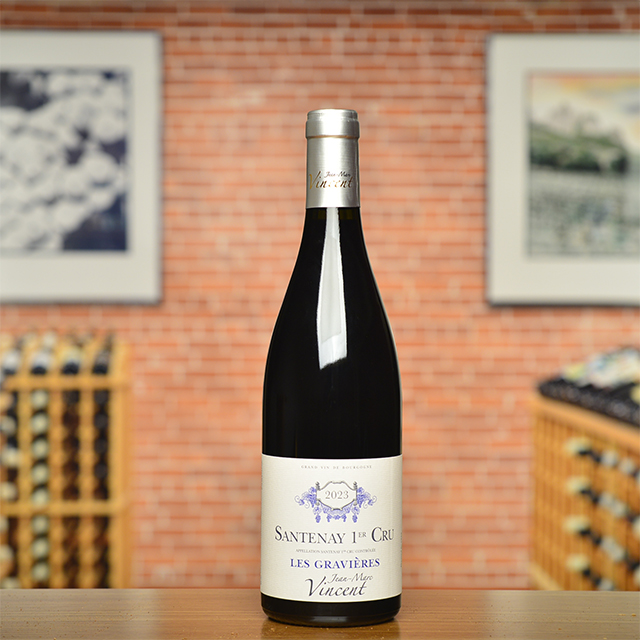Notify me
2020 Vino Bianco “Modestu”
Giovanni Montisci
Perhaps the Mediterranean’s most ancient and historically prized grape variety, Moscato finds a special home in the highlands of central Sardinia, perched some 2,500 feet above the coastal paradise for which the island is known. Montisci’s bone-dry rendition from very old bush vines is unlike any other Moscato in the world: skin-fermented, barrel-aged, and unfiltered, it recalls the fleshy texture of a ripe yellow peach before herbal and salty, mineral nuances kick in an extra gear of savory complexity. “With Moscato, all the flavor is in the skins,” Giovanni asserts. Drink it cool, not cold, and let it breathe to experience the full spectrum.
—Anthony Lynch
| Wine Type: | white |
| Vintage: | 2020 |
| Bottle Size: | 750mL |
| Blend: | Moscato |
| Appellation: | Vino da Tavola |
| Country: | Italy |
| Region: | Sardinia |
| Producer: | Giovanni Montisci |
| Winemaker: | Giovanni Montisci |
| Vineyard: | 60 years |
| Soil: | Sandy granite, clay |
| Farming: | Organic (practicing) |
| Alcohol: | 14% |
More from this Producer or Region

2022 Isola dei Nuraghi Rosso “Oberaìa”
Italy | Sardinia
Cask-aged Sardinian Cannonau yields a quintessential Mediterranean red.

2023 Cannonau di Sardegna
“Barrosu”
Italy | Sardinia
With intense flavors of blood orange, brambly fruit, licorice, and herbs, Barrosu is perfectly suited to a wide range of meat slow-cooked over coals.

2020 Cannonau di Sardegna “Riserva Franzisca”
Italy | Sardinia
Sporting rich primary fruit, an intense granitic backbone, and mellow tannins, this monument to Sardinian viticulture delivers impressive power.

2022 Isola Dei Nuraghi Bianco “Prama Dorada”
Italy | Sardinia
The interplay of salinity, bitters, and a waxy richness tug at the palate in every direction, providing a textural experience you’ll particularly appreciate at table.

2019 Vino Rosso “Barrolu”
Italy | Sardinia
You’d be right to be skeptical of a Nebbiolo from Sardinia, but from a top-notch terroir high in the mountains, it is something else entirely.

2020 Vino Rosso “Barrolu”
Italy | Sardinia
You’d be right to be skeptical of a Nebbiolo from Sardinia, but from a top-notch terroir high in the mountains, it is something else entirely.

2024 Rosato “Barrosu”
Italy | Sardinia
It offers deep complexity and layers of flavor, like a nectar of crushed strawberries with a savory, stony finish.

2015 Isola dei Nuraghi Rosso “Oberaia”
Italy | Sardinia
A thick, rustic, brooding red dripping with Sardinian sunshine, perfect for those inevitable nights when the fog rolls in.

2021 Vino Bianco “Modestu”
Italy | Sardinia
Old-vine Moscato from Sardinian mountaintops, 4 days on skins, fermented dry and aged in barrel—heavenly with sea urchin pasta

2015 Isola Dei Nuraghi Bianco
“Prama Dorada”
Italy | Sardinia
Recommended for the curious, the geeky, and enthusiasts of grilled fish, bottarga pasta, and goat cheeses.
 /
/
About The Producer
Giovanni Montisci
About The Region
Sardinia

Our first foray into Sardegna is very recent, and it only took one trip to fall in love with the island, its culture, and its wines. Similar to its northerly neighbor, Corsica, there is a strong regional identity here that goes far beyond its official status as one of Italy’s twenty regions. Its people are proud, strong-willed, and deeply attached to their traditions—a distinctive character often seen with island people and accentuated by its long history of invasions and outside rule.
This tumultuous past has resulted in diverse influences—Greek, Roman, Aragonese, Catalan, and Ligurian, just to name a few—that have shaped the island’s culture, language, cuisine, and wines over many centuries. While Vermentino and Cannonau (aka Grenache) reign, Sardegna also boasts a number of indigenous grapes that are capable of expressing something unique in its abundant variety of terroirs.
The Mediterranean plays a major role, providing cooling, salty breezes to coastal areas, while the rugged, mountainous interior is home to high-altitude sites where wines retain freshness in spite of the southerly latitude. The granitic highlands of Gallura and Barbagia come to mind as some of its most qualitative zones, but a range of soils, elevations, and varying distance to the sea mean that the island is capable of producing wines in all styles, from crisp whites to powerful reds and exquisite vini dolci.
The three growers we represent bring something new to the table, something fascinating that is not found elsewhere in Italy or even in nearby Corsica. Their wines evoke the rustic beauty of this fascinating island civilization, and of course, pair perfectly with the local cuisine, be it seafood-based or the hearty, earthy specialties of its interior.
More from Sardinia or Italy
2015 Isola Dei Nuraghi Bianco
“Prama Dorada”
Deperu Holler Italy | Sardinia
2022 Isola Dei Nuraghi Bianco “Prama Dorada”
Deperu Holler Italy | Sardinia
2023 Isola Dei Nuraghi Rosso “Familia”
Deperu Holler Italy | Sardinia
2023 Cannonau di Sardegna
“Barrosu”
Giovanni Montisci Italy | Sardinia
2024 Rosato “Barrosu”
Giovanni Montisci Italy | Sardinia
2015 Isola dei Nuraghi Rosso “Oberaia”
Deperu Holler Italy | Sardinia
2020 Cannonau di Sardegna “Riserva Franzisca”
Giovanni Montisci Italy | Sardinia
2020 Isola Dei Nuraghi Bianco “Prama Dorada”
Deperu Holler Italy | Sardinia
2019 Vino Rosso “Barrolu”
Giovanni Montisci Italy | Sardinia
2023 Vermentino Isola dei Nuraghi “Fria”
Deperu Holler Italy | Sardinia
2021 Isola Dei Nuraghi Bianco “Prama Dorada”
Deperu Holler Italy | Sardinia
2022 Isola dei Nuraghi Rosso “Oberaìa”
Deperu Holler Italy | Sardinia
2015 Isola Dei Nuraghi Bianco
“Prama Dorada”
Deperu Holler Italy | Sardinia
2022 Isola Dei Nuraghi Bianco “Prama Dorada”
Deperu Holler Italy | Sardinia
2023 Isola Dei Nuraghi Rosso “Familia”
Deperu Holler Italy | Sardinia
2023 Cannonau di Sardegna
“Barrosu”
Giovanni Montisci Italy | Sardinia
2024 Rosato “Barrosu”
Giovanni Montisci Italy | Sardinia
2015 Isola dei Nuraghi Rosso “Oberaia”
Deperu Holler Italy | Sardinia
2020 Cannonau di Sardegna “Riserva Franzisca”
Giovanni Montisci Italy | Sardinia
2020 Isola Dei Nuraghi Bianco “Prama Dorada”
Deperu Holler Italy | Sardinia
2019 Vino Rosso “Barrolu”
Giovanni Montisci Italy | Sardinia
2023 Vermentino Isola dei Nuraghi “Fria”
Deperu Holler Italy | Sardinia
2021 Isola Dei Nuraghi Bianco “Prama Dorada”
Deperu Holler Italy | Sardinia
2022 Isola dei Nuraghi Rosso “Oberaìa”
Deperu Holler Italy | Sardinia
Kermit once said...

Kermit once said...
A good doctor prescribed the wine of Nuits-Saint-Georges to the Sun King, Louis XIV, when he suffered an unknown maladie. When the king’s health was restored the tasty remedy enjoyed a vogue at court. Lord, send me a doctor like that!
Inspiring Thirst, page 117














